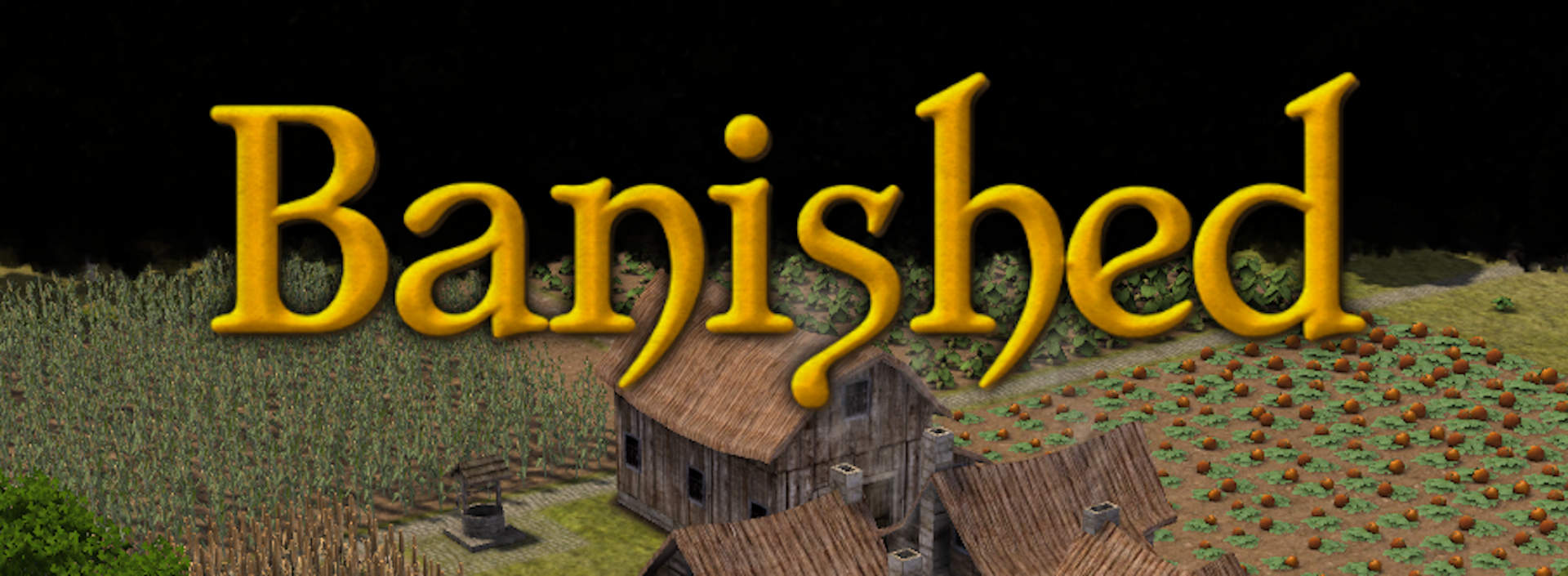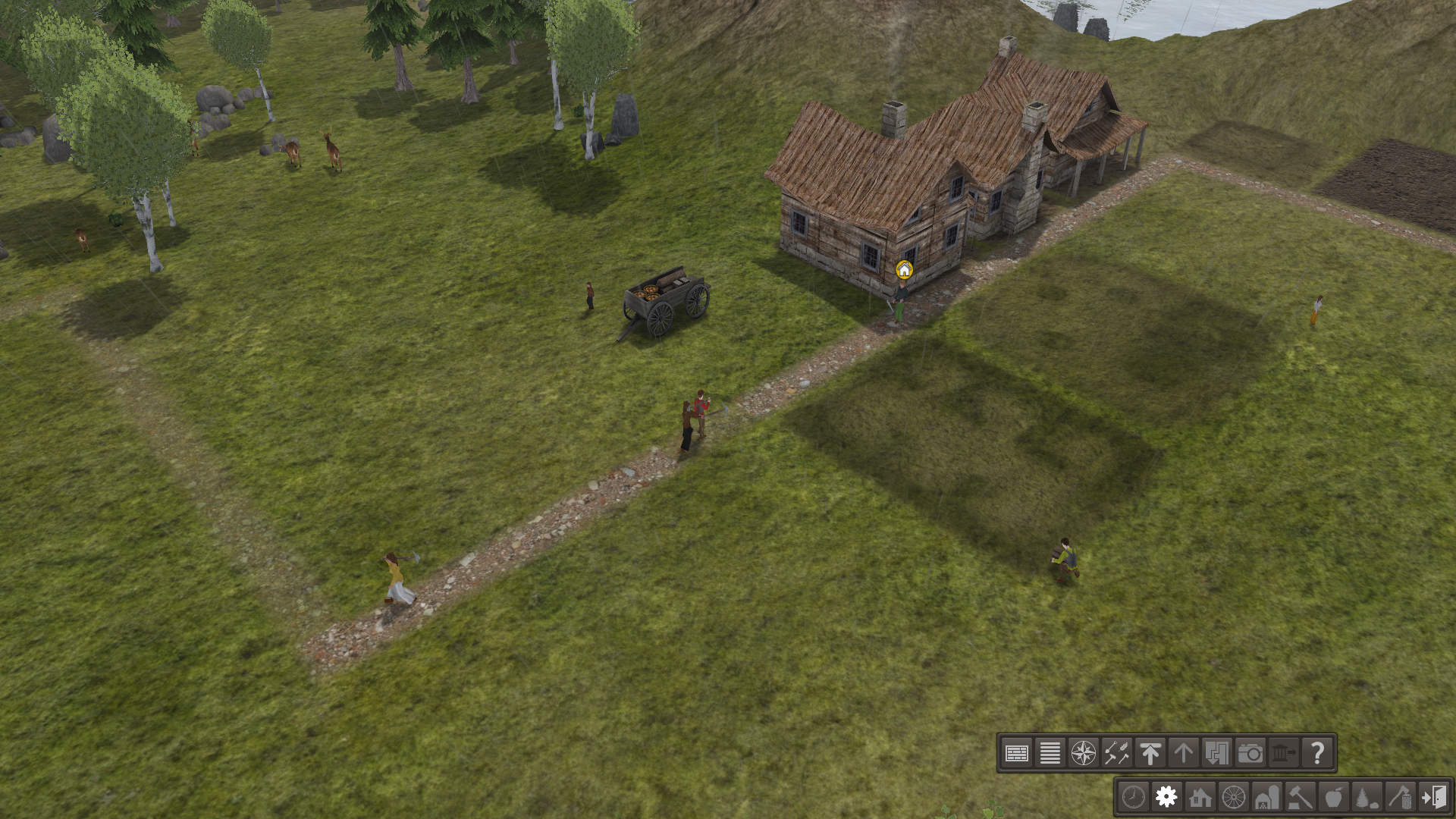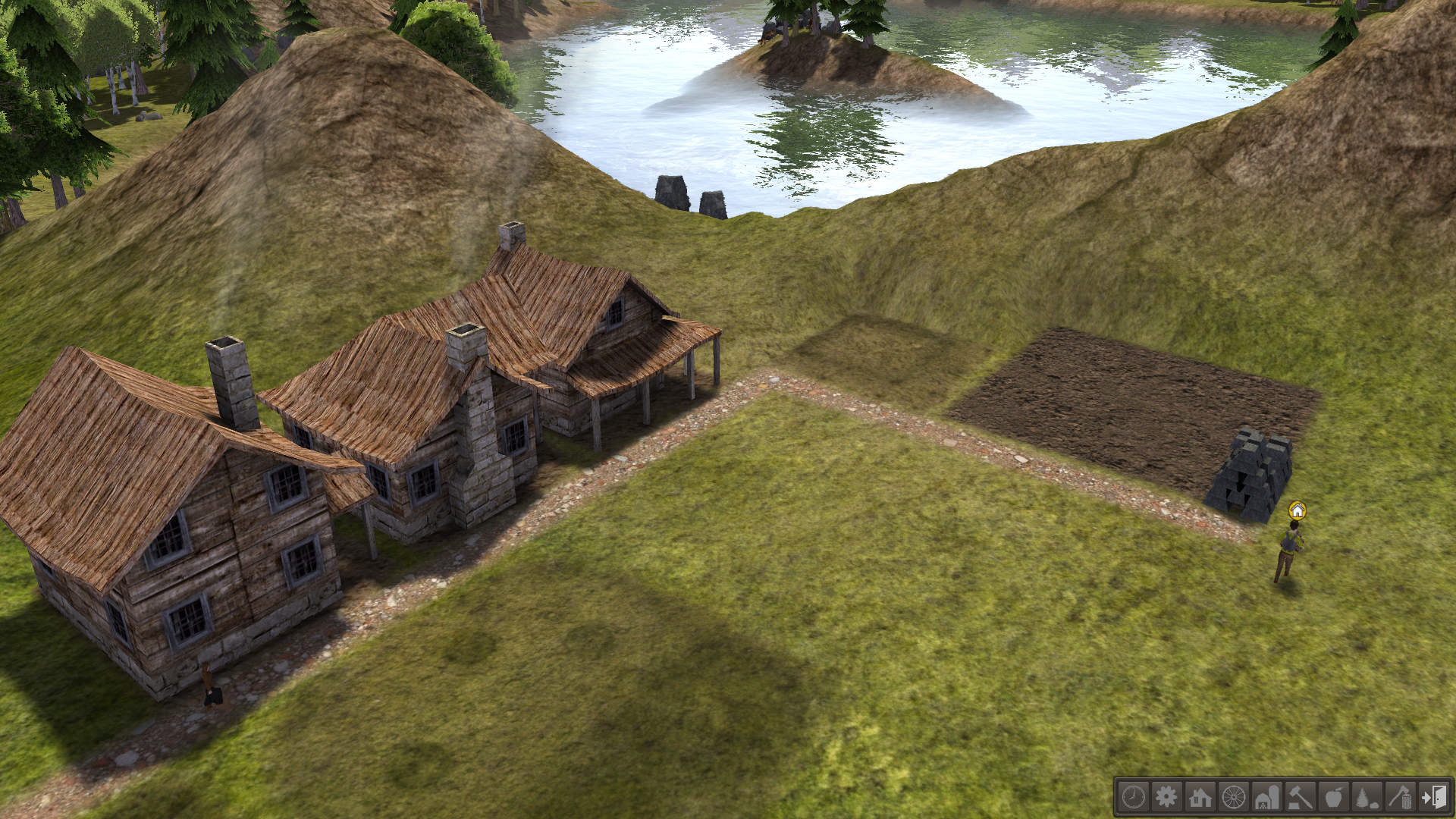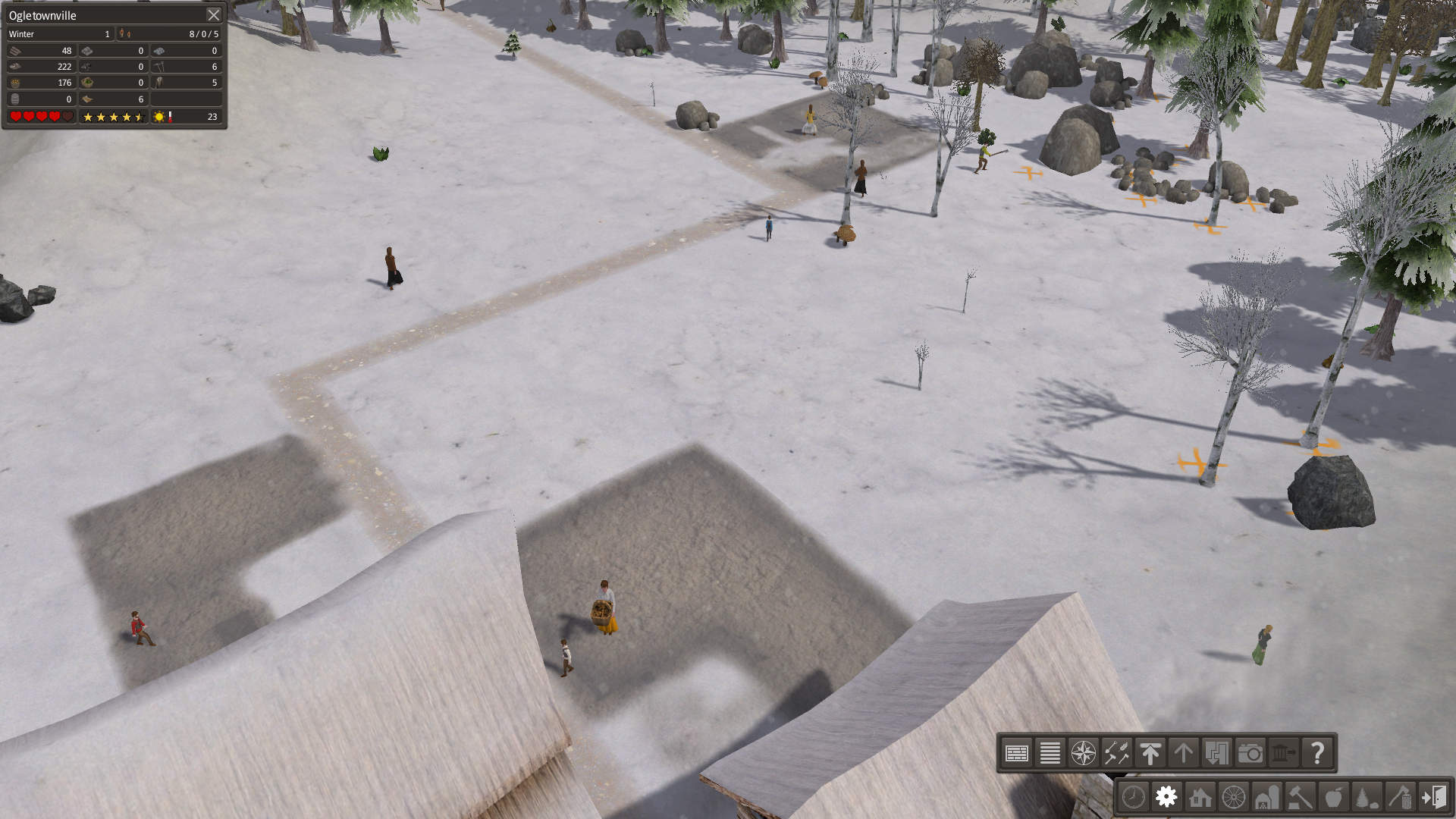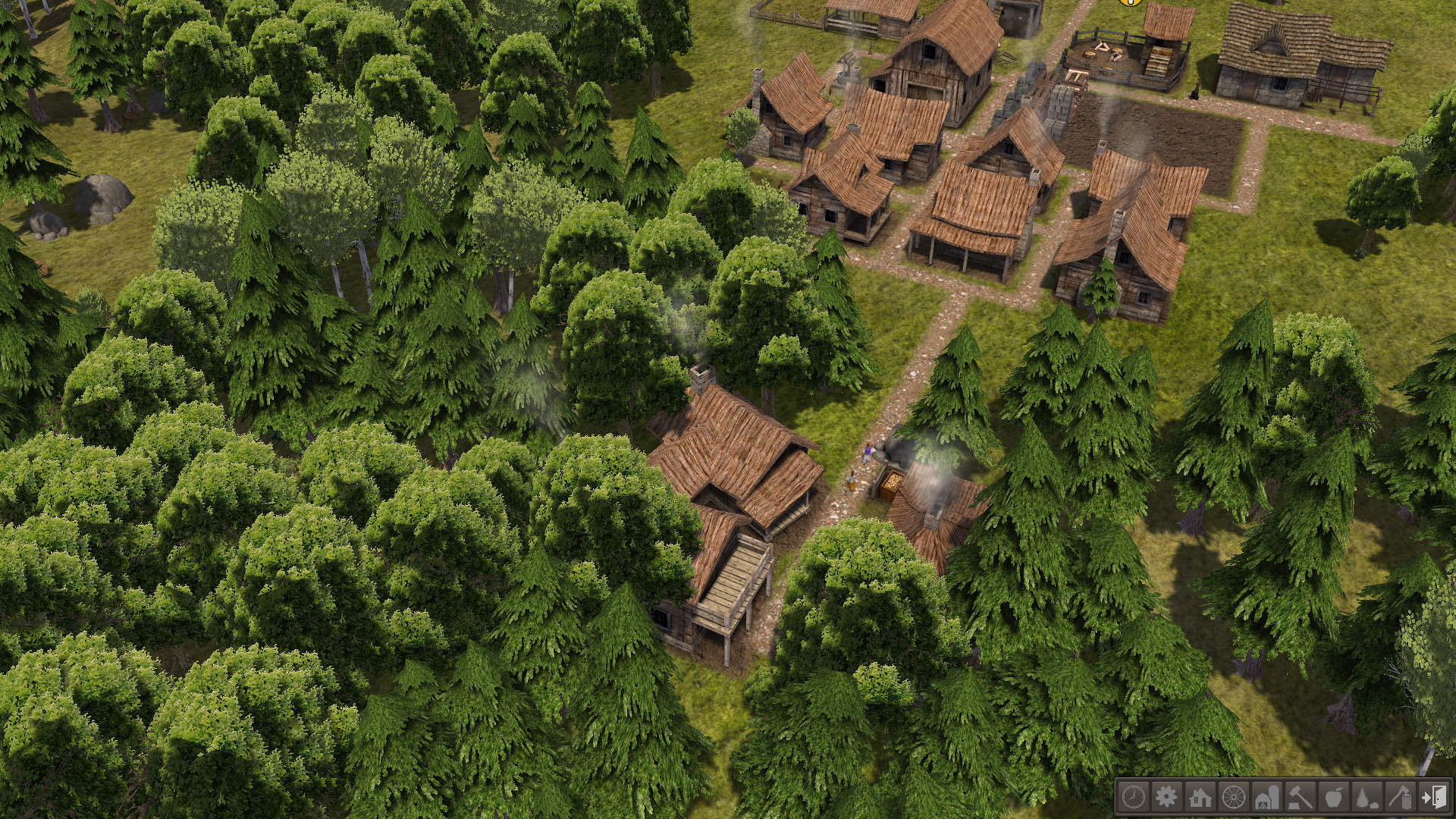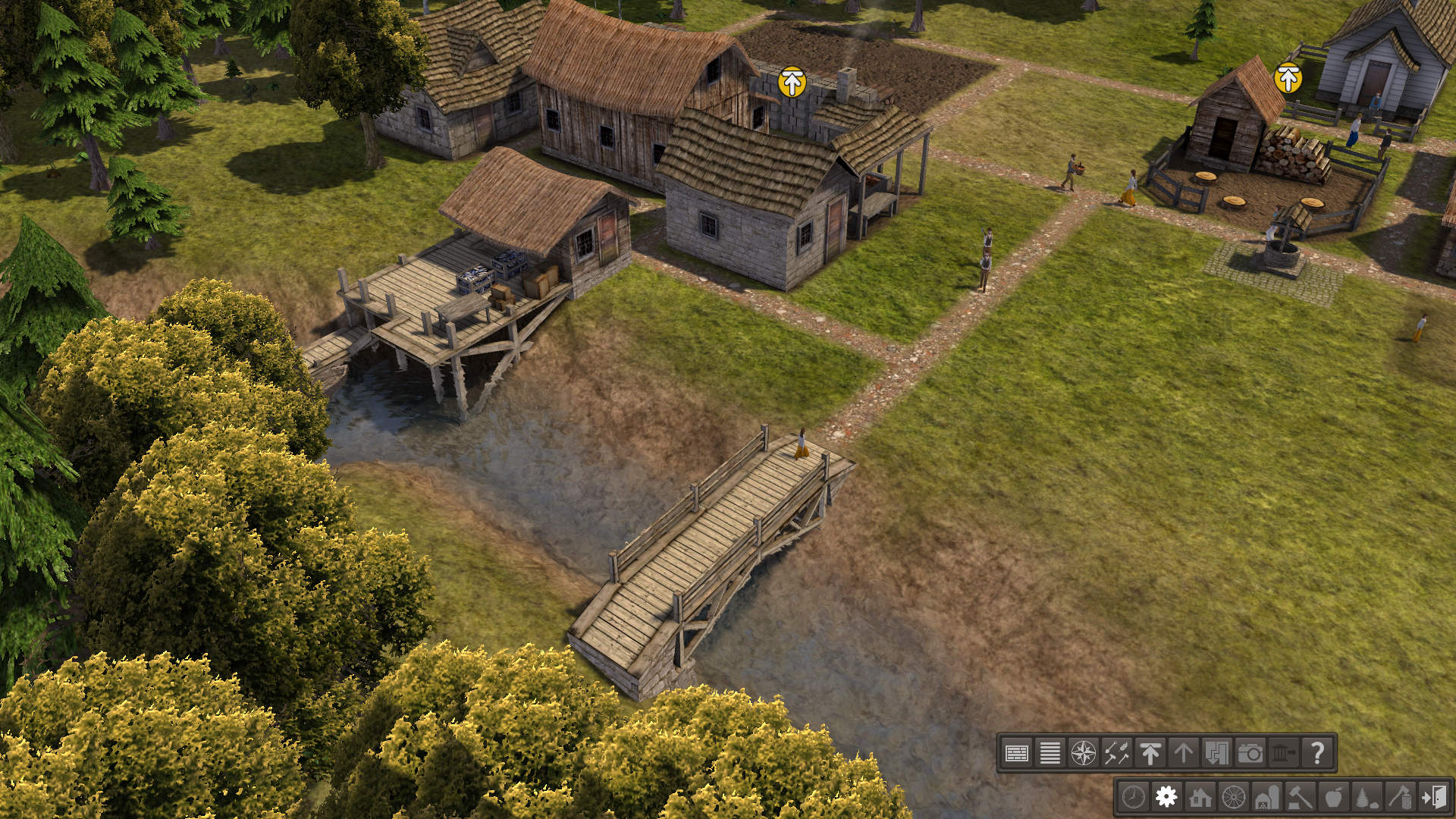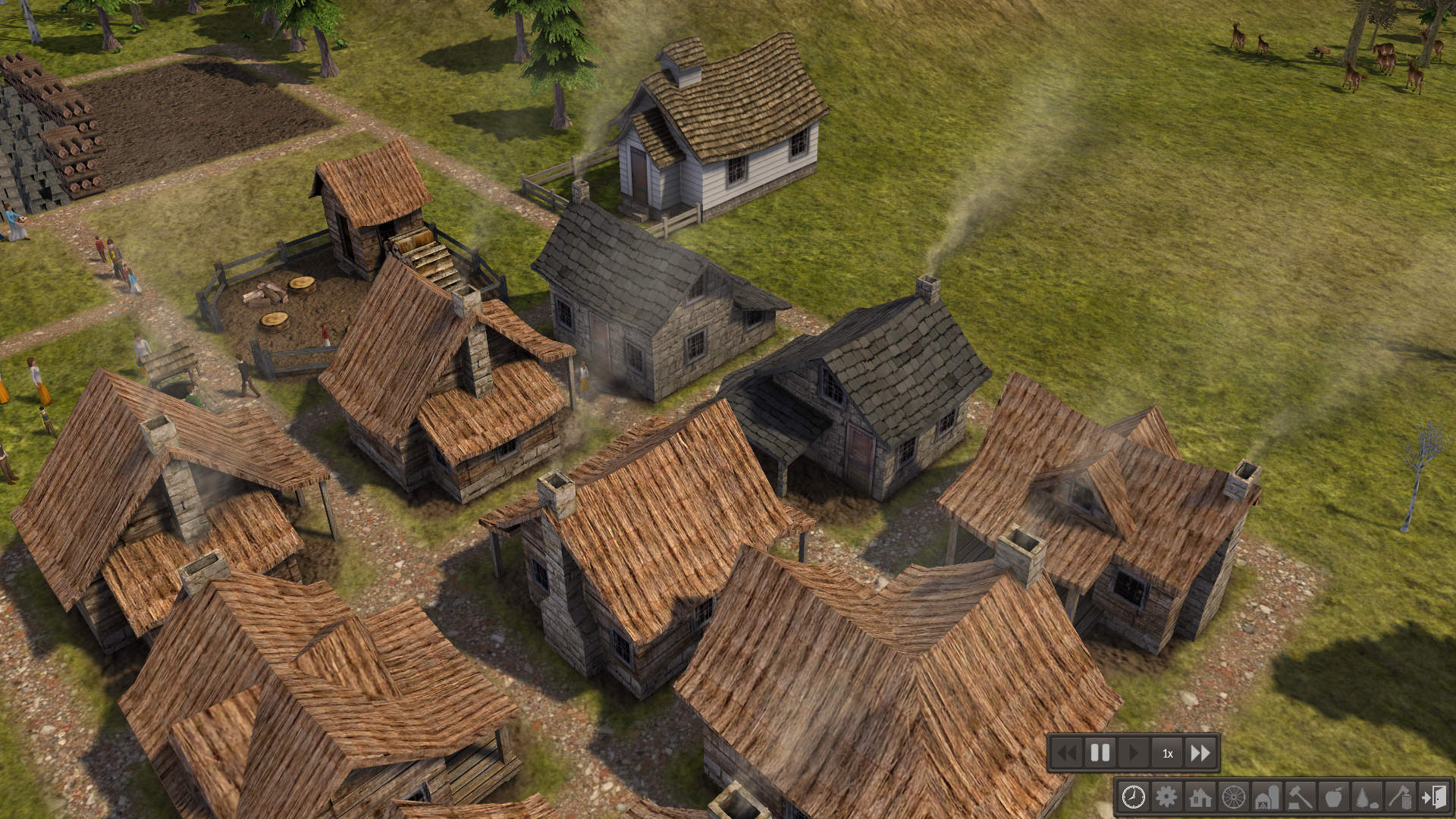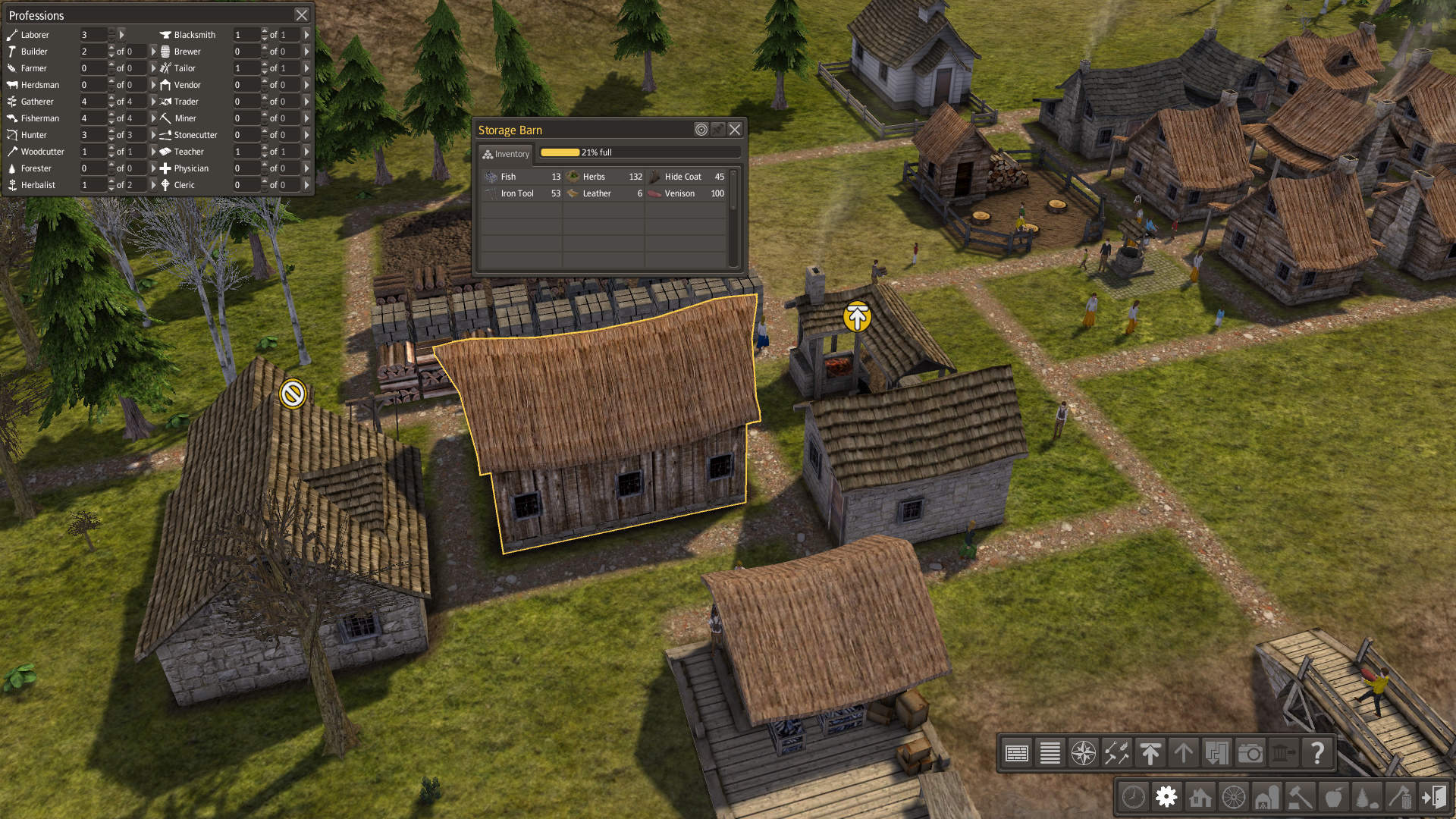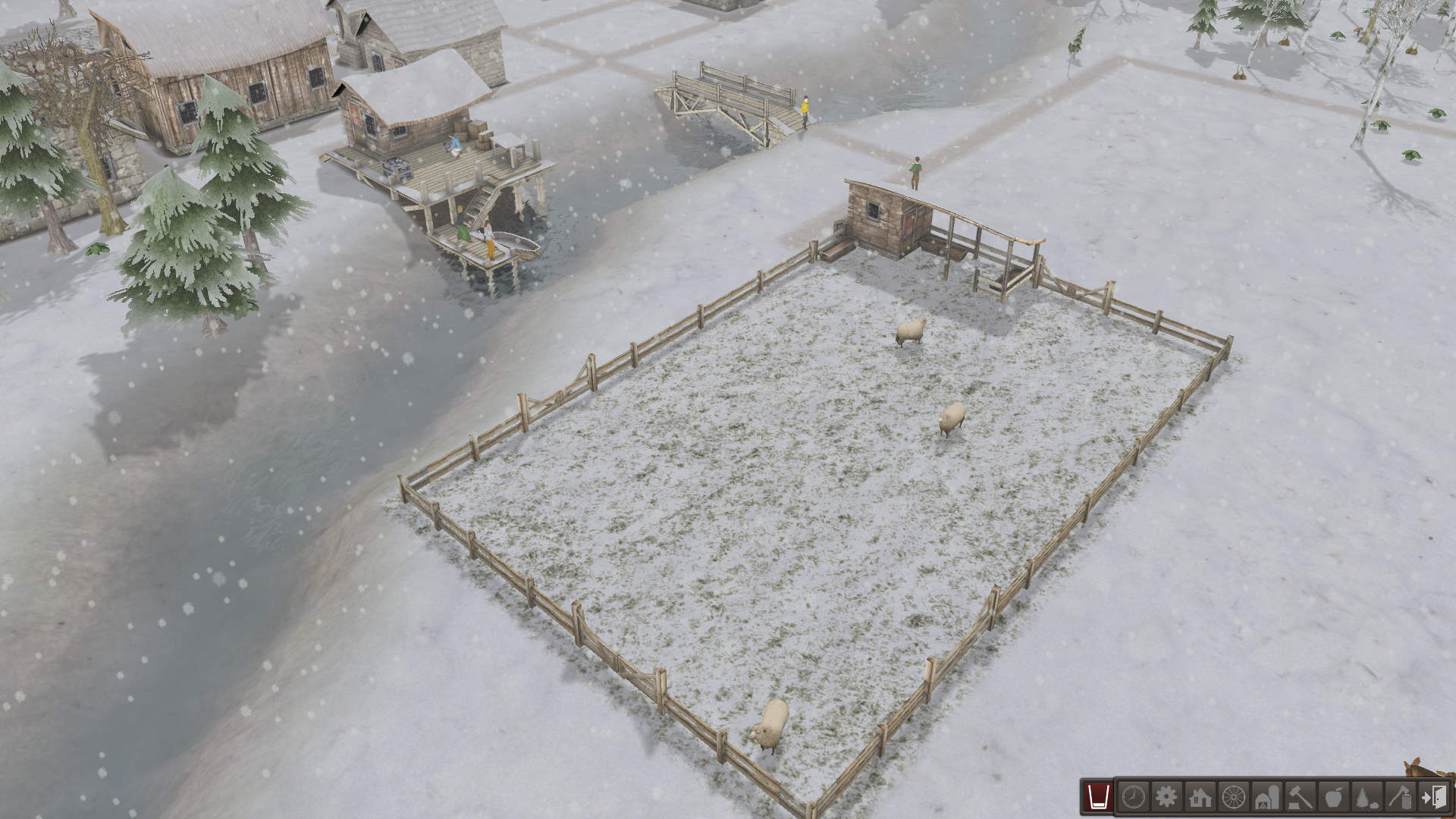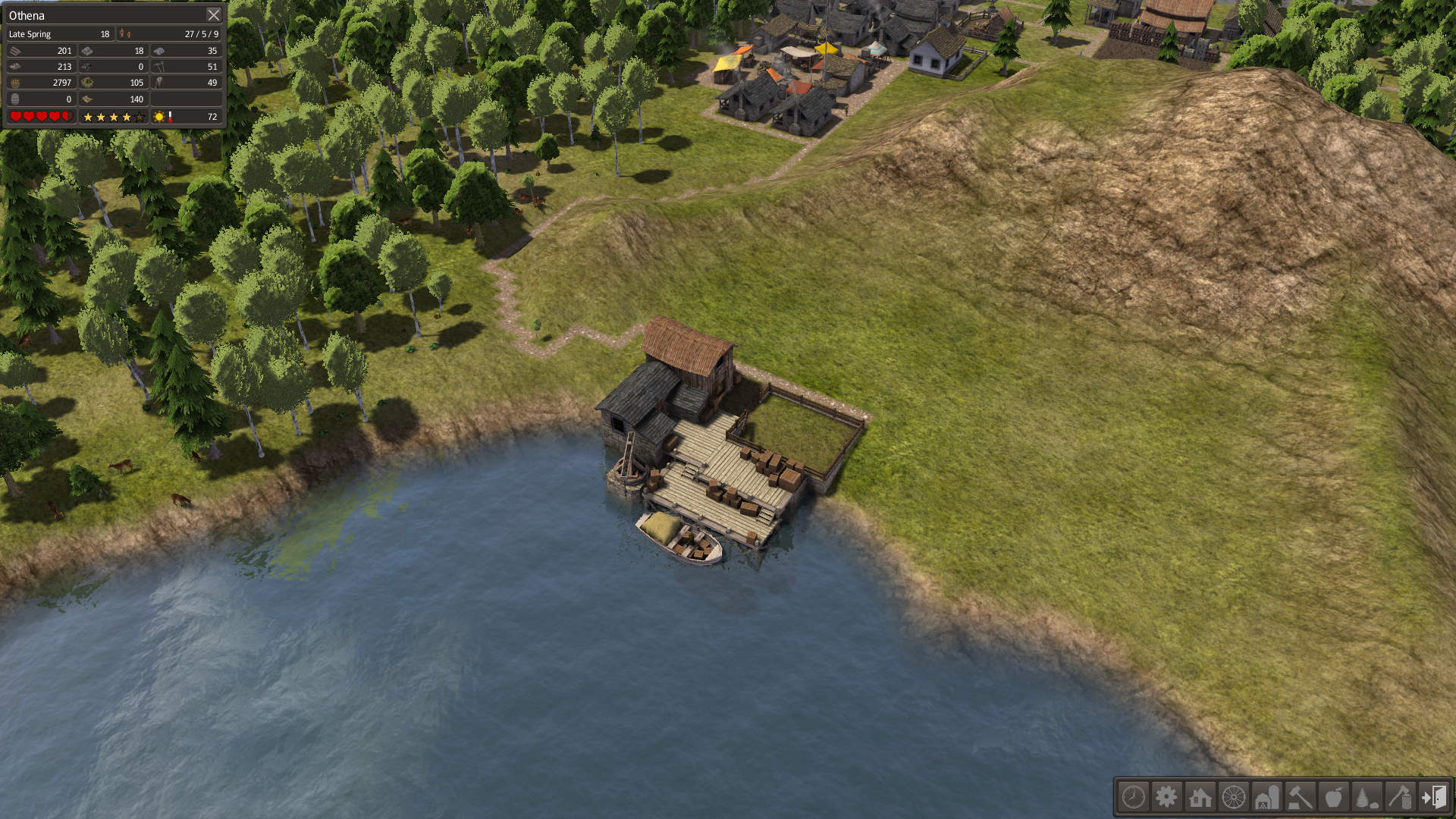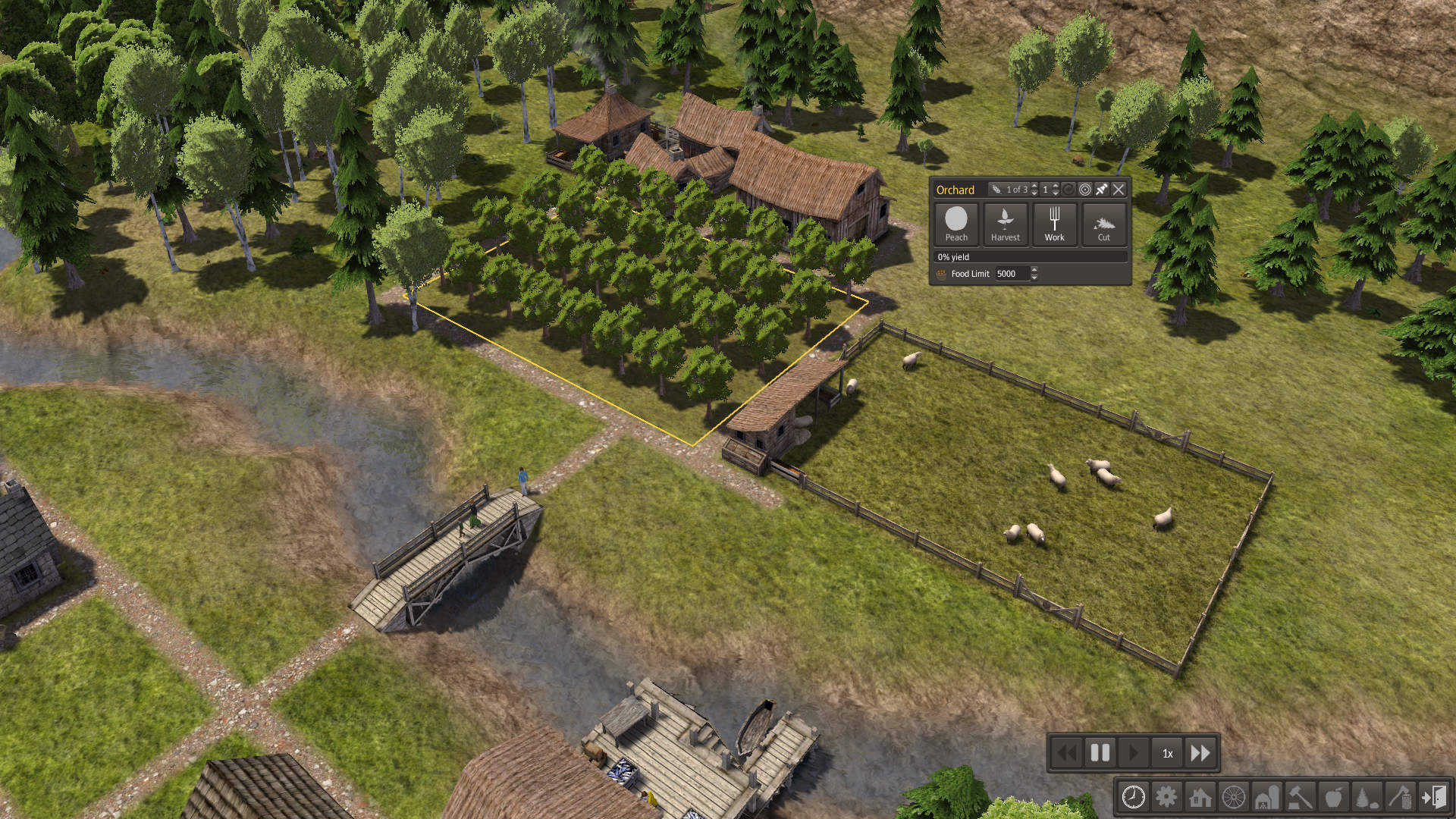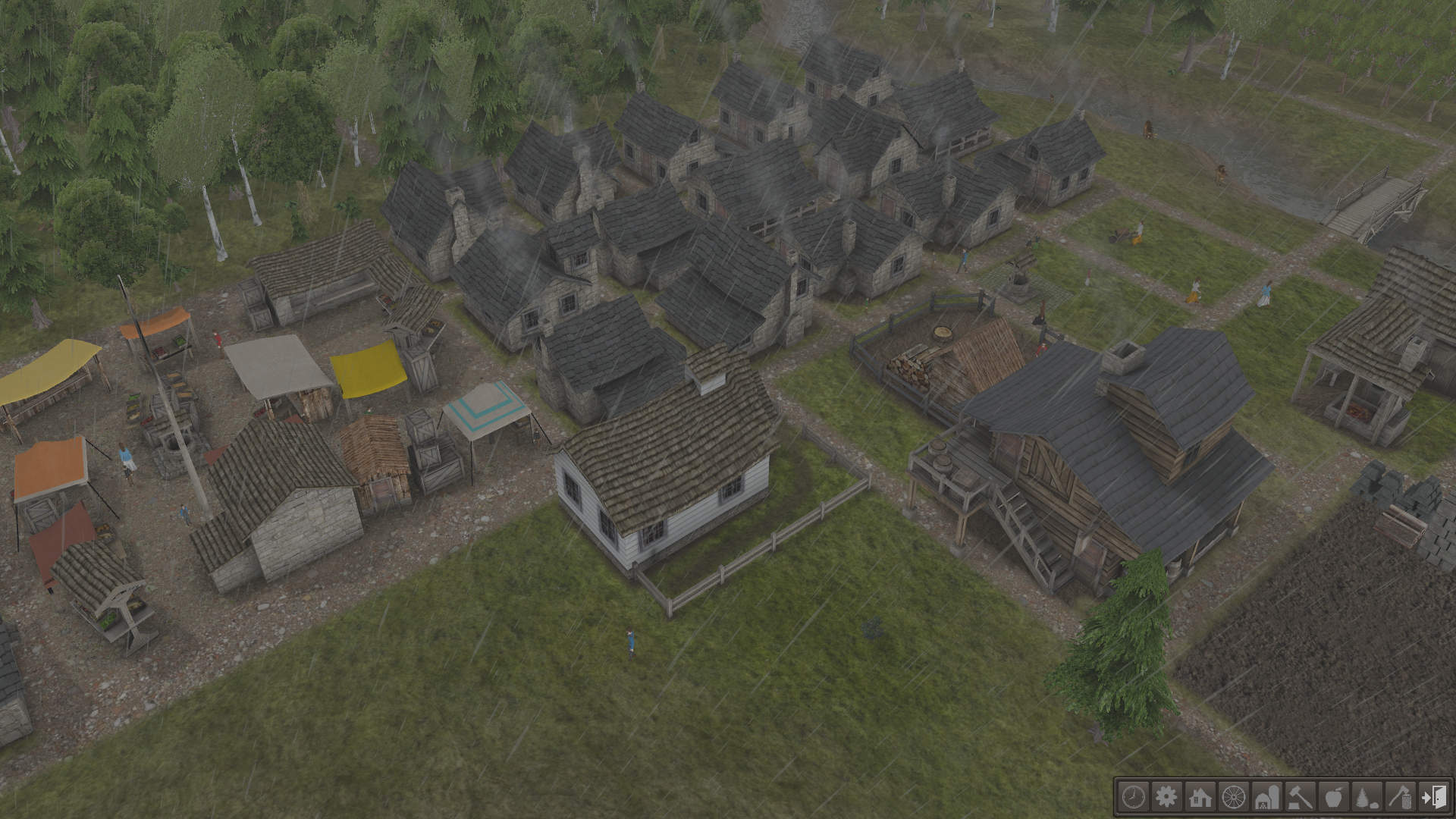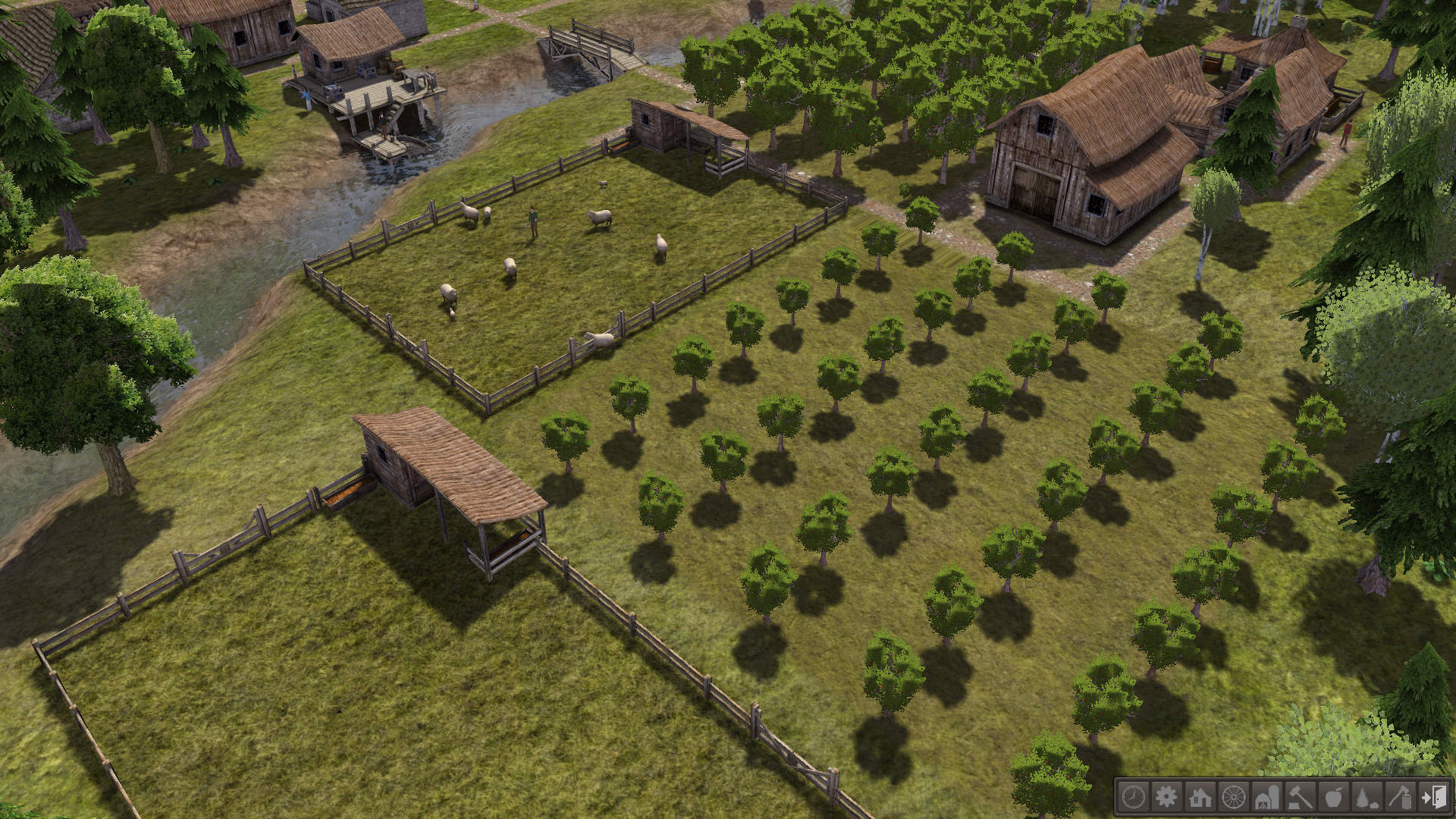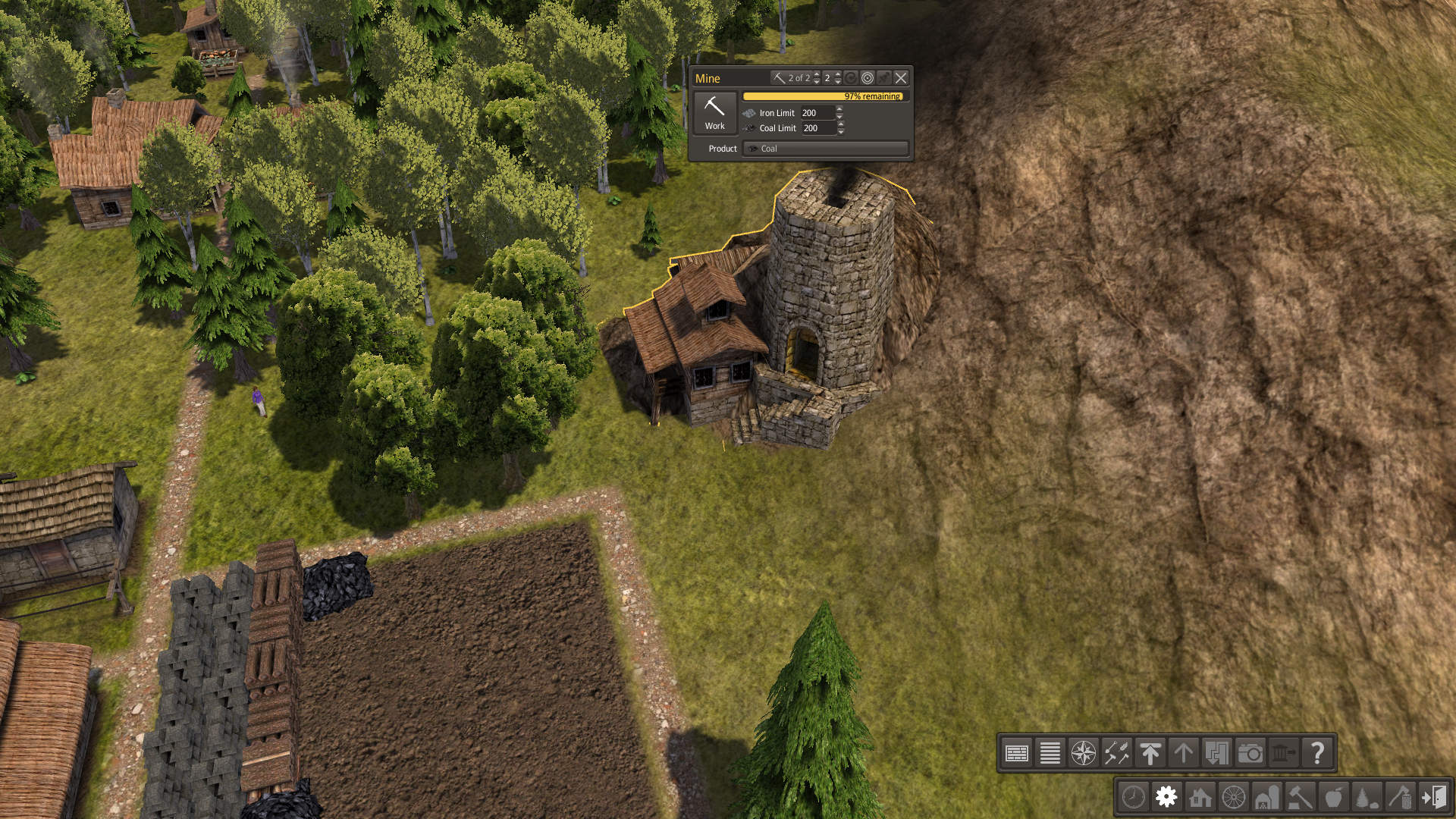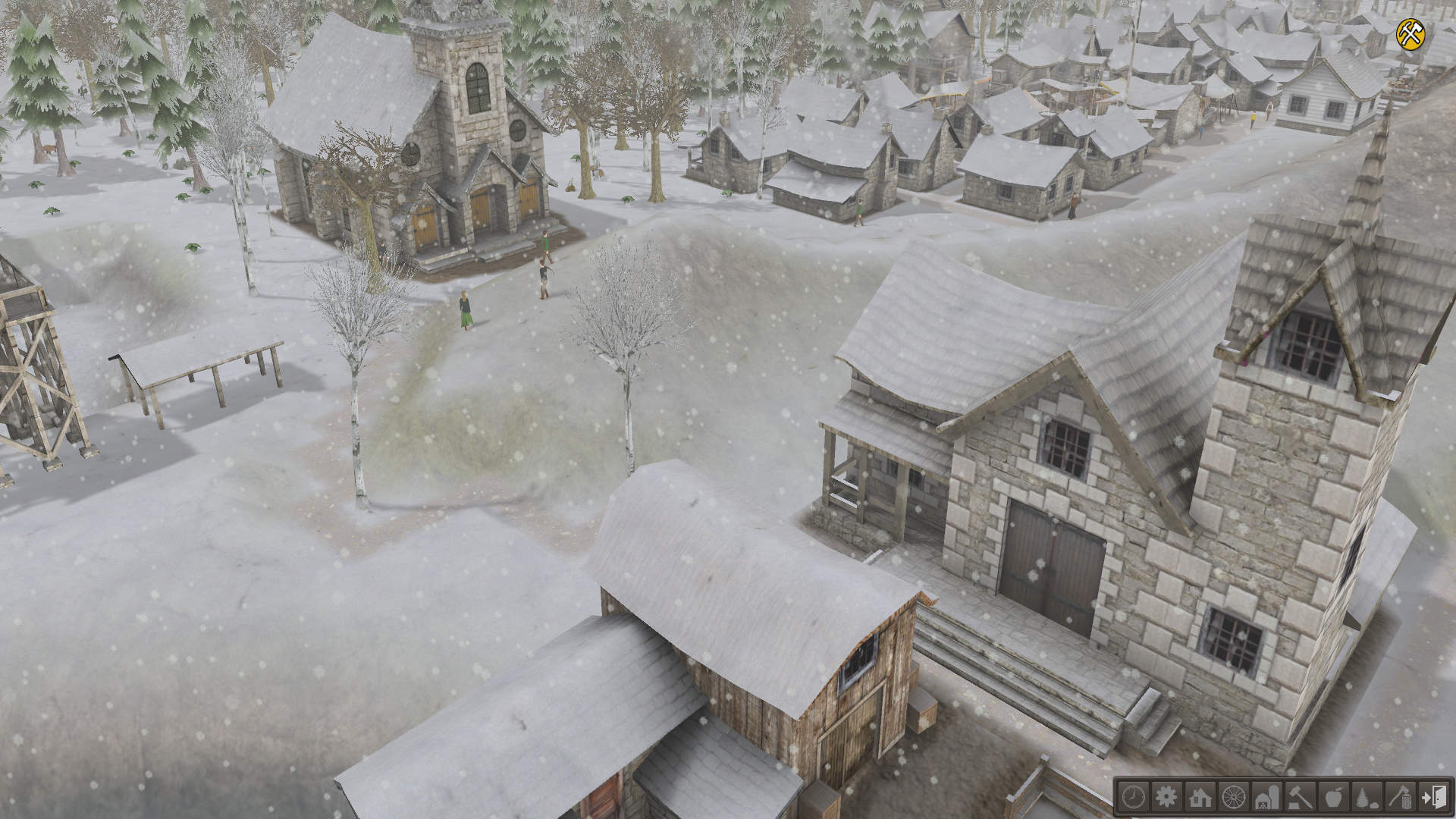Banished
I've always enjoyed games where you simply manage a town or empire. These games will sometimes not have a clear goal except to just manage your town. Banished, released in February 2014, is one such game.
Most games within this genre usually have some kind of goal to work towards, either in terms of reaching a level of population, income or size of your town. However, Banished offers no such goals. Instead, you start out with your initial settlement and are given free reigns to do what you want. The early game is usually the most challenging, as you need to get food production up and running before you run out of your initial food. In short, this game can best be described as a medieval village building/simulation game.
You start out with a few villagers, and a few basic buildings. If you play on higher difficulty, you actually have no buildings. I preferred the higher difficulty, although I struggled to have my people survive until I figured out how to get proper food production. It's a bit of a race to gather the initial resources, then get the necessary buildings up and have people work there. This must all be done before your starting food runs out, because at that point people will start dying. I rarely manage to avoid early casualties on the highest difficulty, but it is usually just a few people before we get a sustainable food income. Multiple food sources is a definitive must. Hunters bring in meat, fishers will bring in fish, and gatherers bring in a variety of edible plants from the forest. There are more advanced food production available, but they will usually take a while to get started and as such are not ideal for your first source of food.
Every building you want to build require resources, and these resources must be gathered. Wood must be cut down from forests, stone must be gathered from the wilderness. And you need laborers to do all this work. Any adult in your village that has not been assigned a job will be a laborer. In order to have buildings constructed, you must assign some villagers to be builders. Those are the only jobs you can assign without special buildings which are required for all other jobs.
This game has no money, there is only basic resources which must be gathered. There are also a few other resources which are created, these will usually require another resource to be created. If you have an excess of one resource and need another, you have the option to make exchanges at a trading post. However, building a trading post already requires a lot of resources, and you don't know what kind of trades will be available. When you build a trading post, it might take years of in-game time before a trader arrives. And they will only arrive if your trading post is connected to the river that runs through the game map. Once you do get a trader at your trading post, you will then be able to trade the goods they brought. A trader is usually not interested in all of your resources, and they usually only bring a very limited selection of goods. This system is good for obtaining a resource that you need to start a new line of production, such as animals for farms. But you can't rely on trade for constant supply. This really puts the emphasis on self-reliance for your village, an aspect of this game that I really like.
In addition to food and the resources required for constructing buildings, you will also need a few more resources for your villagers to survive and be able to do their jobs well. As time goes on seasons will change. During summertime, you don't need to worry about keeping your people warm, but when winter comes with snow and cold, heat is a real issue. Your people will require firewood for their homes, and they need warm clothes. Firewood can be made from regular lumber, and clothes are made from leather or wool or both. Your workers will also require tools, and you must have a blacksmith for the creation of tools. Basic tools can be made from iron, and if you have coal you can make better tools from both coal and iron. Iron can be gathered from the land itself, but coal can only be mined. This requires the construction of a mine where you will need to assign workers.
This is an aspect I like about this game. You start out with the minimum, and should focus on surviving. Once the basics are covered you can start to expand your village into more advanced production lines. At this point, your town is probably so large that you require multiple storage barns to store all your gathered resources. By default, villagers will only gather food from the nearest storage barn. If you have multiple sources of food, which is spread across multiple storage barns, then your villagers will not benefit from the larger food selection. The solution to this is to build a market. Workers at the market will travel to your storage barns and collect the different resources and store them at the market. Your villagers will then make use of the market to gather everything they need. In this way, you can have lots of outlying storage barns, and one central market close to your villagers houses.
There is one negative thing about this game, and that is a lack of features beyond the basics. It will not take long before you realize that you have seen all the game has to offer. I found the most fun in starting the game with hardest difficulty and surviving at first. Once my village has grown fairly large I find myself losing motivation to do much else. You could keep expanding your village to cover as much of the map as you want, or start to create districts that focus on one type of production. And I suppose that's the point of the game, set your own goals on how you want to expand your village, but I would have appreciated some kind of stretch goals within the game.
You can enable natural disasters, which is a feature I quickly decided to play without. I was just barely getting started and a tornado appeared and destroyed the few buildings I had, as well as my food supply. As a result, everyone died and I had to start a new game. You can't toggle this feature after you started a game, it can only be toggled during setup so it's important to consider if you want it or not before getting started. If there had been an option to toggle this after starting then I might want to try it out once my village is done with the initial surviving phase.
This is a fun game, especially if you are looking for a relaxing experience without any pressure or set goals. However, because of the complete lack of goals, it becomes important that you are able to set your own goals so that you don't lose interest too quickly. I still prefer the early game, especially on the highest difficulty, where it is a real challenge to keep your people alive. But I do still continue my game from time to time, just so I can watch my village running peacefully, and slowly make expansions as I see fit.
If you enjoy this type of gameplay, then it's certainly a worthwhile purchase. While it's far from making it to my list of favorites, it's still a good game that was definitely worth the purchase.
Categories: Strategy, Simulation
You need to Log in to comment.
If you don't have an account, then feel free to Create an account
